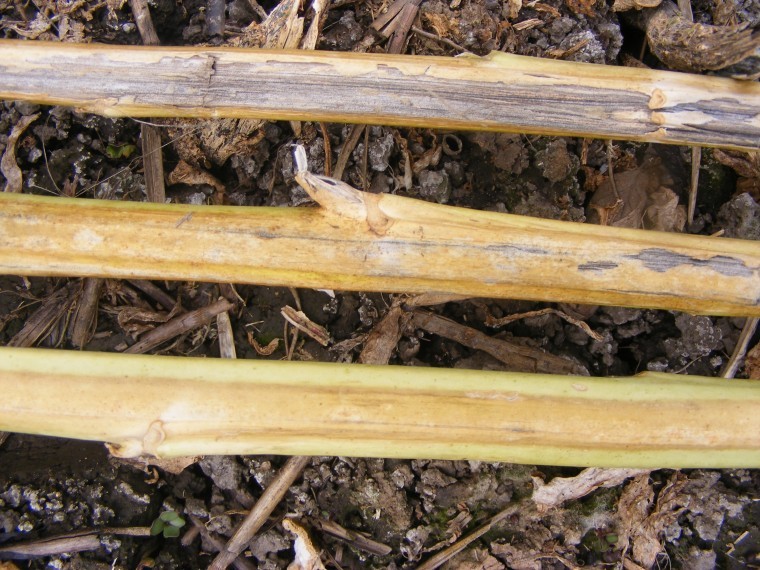Some crops will be showing signs of premature ripening in the next few months, June and July. Such symptoms can be due to a number of diseases, but Verticillium stripe (previously known as Verticillium wilt) is one that should be noted. “It is worth going out to inspect crops and see if this disease can be found,” says Neil Groom, technical director of Grainseed.
“If you have Verticillium in your soils, it can be there for over 20 years and the only way to live with it is to grow a variety which has good Verticillium resistance or tolerance. You have no other choice. Using crop intervals or rotations is impractical and there are no approved chemicals. If you don’t grow a resistant variety, you will have to suffer the consequences in future years. We suggest that those who are seeing Verticillium stripe now or in the past few years make a proactive decision to grow a resistant variety this autumn.”
ADAS report that Verticillium stripe symptoms are seen as the crops starts to ripen. What to look out for are yellowing leaves, premature ripening of branches and grey striping down stems, often on one side only but it can be the whole cross-section of a stem. Underneath the vertical stripes, if you peel off the outer stem layer you will see grey vascular tissue. If you use a hand lens, you can see tiny black dots or microsclerotia. The microsclerotia survive in the soil for over 20 years to infect subsequent crops, hence the impractical nature of crop intervals in its control.
“To control it sustainably, you must use resistant varieties,” says Neil. “Once you have identified Verticillium, you need to start thinking seriously about how to handle it. Unlike other diseases of rape, there is no proven or approved fungicide to control it and so growers must rely on cultural control measures – and the only one you really have open to you is to choose varieties with known resistance. Grainseed oilseed rape varieties including Es Mambo have proven resistance to Verticillium, following several years’ independent trials and commercial experience.”
Neil advises growers to grow rape varieties with a good overall combined disease resistance. “In cereals you don’t think twice about studying disease resistance ratings in detail before choosing your variety. This needs to be the same for rape varieties now. A good variety needs to have resistance to Verticillium, Phoma, as well as to Light Leaf spot. Es Mambo has a 7.8 rating for Phoma stem canker and a 6.4 for Light Leaf spot plus it is the Number 1 performing variety in AICC Verticillium trials. Es Alegria has a 7.4 rating for Phoma, 5.4 for Light Leaf spot and has good tolerance to Verticillium as well. Genetic resistance to Phoma in all Grainseed varieties is multi-gene and so unlikely to break down.”
When growers are looking more closely at their growing costs, choosing a variety such as Mambo where you can be sure of its strong disease resistance across the board can save you money, says Neil.
“Mambo also shows exceptional autumn vigour, helping the crop grow away from diseases and pests, increasingly important with the pressure of cabbage stem flea beetles at planting. It also has good oil levels of 46%. As a variety it gives growers peace of mind with its strong broad disease resistance, its low biomass and its vigour characteristics.”
In the future AHDB is looking to assess and rate susceptibility of a range of varieties to Verticillium and these could be added to the published listings in 2020.




